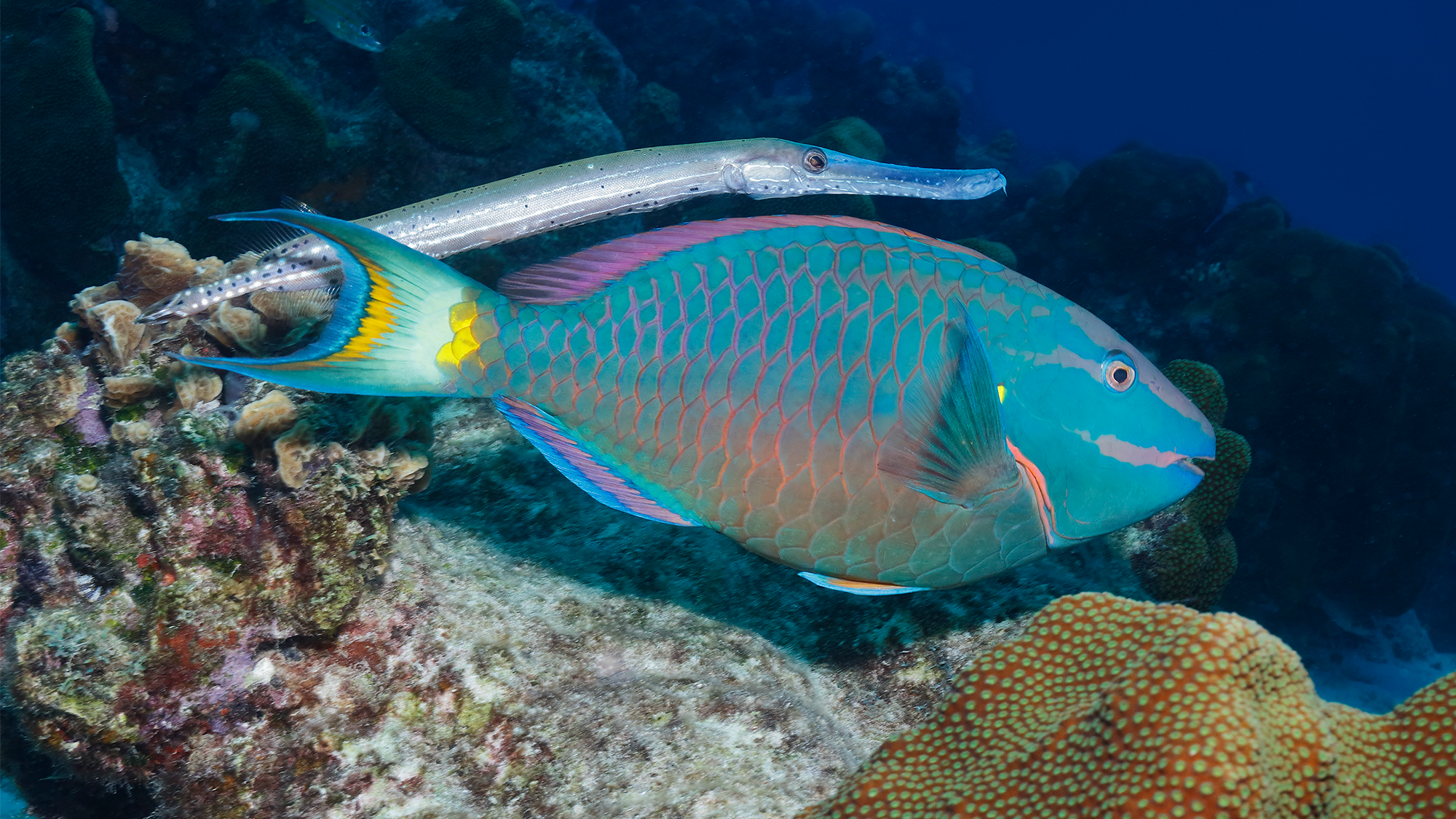

Coral reefs are a bevy of biodiversity, supporting an estimated 25 percent of all known marine species. These reefs are home to many mutually beneficial relationships, but the animals that live there still have to eat. Scientists are learning more about the hunting tactics of some coral reef fish.
[Related: Coral is reproducing in broad daylight.]
A study published August 7 in the journal Current Biology found the first known experimental evidence that trumpetfish conceal themselves by swimming closely behind another fish when it is hunting. This reduces the likelihood of being detected by its prey.
This shadowing behavior typically uses a non-threatening fish species as camouflage, similar to how duck hunters will hide behind cardboard cut-outs of domesticated animals called “stalking horses” to approach ducks undetected. However, this strategy hasn’t been observed much in non-human animals.
“When a trumpetfish swims closely alongside another species of fish, it’s either hidden from its’ prey entirely, or seen but not recognised as a predator because the shape is different,” study co-author and University of Cambridge behavioral ecologist Sam Matchette said in a statement.
In the study, the team conducted field work in the Caribbean Sea near the coral reefs off the island of Curaçao. The team set up an underwater system to pull 3D-printed models of trumpetfish on nylon lines past colonies of damselfish, which are a common meal for the trumpetfish. They had to spend hours underwater perfectly still to conduct the experiment that they recorded using video cameras.
“Doing manipulative experiments in the wild like this allows us to test the ecological relevance of these behaviors,” study co-author and University of Bristol behavioral biologist Andy Radford said in the statement.
[Related: Google is inviting citizen scientists to its underwater listening room.]
When the pseudo-trumpetfish moved past by itself, the damselfish swam up to inspect it and then rapidly fled back to their shelter in response to this potential threat from a predator. When a model of an herbivorous and non-threatening parrotfish moved past alone, the damselfish inspected it and did not have as big a reaction.
The team then used a trumpetfish model that was attached to the side of a parrotfish model as a way to replicate the shadowing behavior that the real trumpetfish use on the reef. The damselfish did not appear to detect the threat and responded the same way they did to the parrotfish model.

“I was surprised that the damselfish had such a profoundly different response to the different fish; it was great to watch this happening in real time,” said Matchette.

Local divers were interviewed to see if this was happening out in the wild. The divers said they were more likely to observe shadowing behavior on degraded, less structurally complex reefs. Global warming from human-caused climate change, pollution, and overfishing are harming coral reefs around the world. In July, water temperatures off the coast of Florida reached a staggering 100 degrees Fahrenheit, prompting coral bleaching and efforts to preserve coral species in laboratories.
“The shadowing behavior of the trumpetfish appears [to be] a useful strategy to improve its hunting success. We might see this behavior becoming more common in the future as fewer structures on the reef are available for them to hide behind,” co-author and University of Cambridge biologist James Herbert-Read said in a statement.